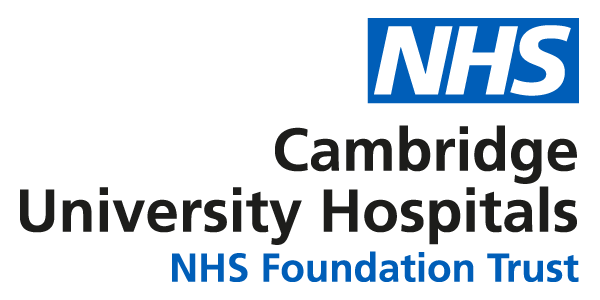Introduction
This leaflet is for people who have had a knee arthroscopy, and it aims to give you advice on how to recover from your operation as soon as possible.
What is a knee arthroscopy?
A knee arthroscopy, sometimes called a ‘keyhole operation’ is performed to look inside the knee joint. The surgery can be used as a form of assessment and/or treatment.
A knee arthroscopic procedure may be done for the following reasons:
- Exploration under anaesthetic (EUA)/assessment
- Removal of bits of bone, cartilage, or other tissue that have become detached and are floating within the joint
- Excision (‘trimming’ or ‘tidying up’) of damaged cartilage/meniscus
- Removal of bony spurs or scar tissue
- Washout procedure (to clean the joint of infection)
What to expect after the operation
The surgery is performed as a day case, therefore you will not need to see a physiotherapist, unless your surgeon has arranged this.
It is normal to have pain after the operation, but this should gradually decrease. Raising your leg, pain medication and gentle exercises are all effective ways to manage your pain in this recovery period.
Your surgeon would like you to put weight on your knee as quickly possible after the operation. You may be offered crutches for 24-48 hours to make this easier, but not everyone needs them.
The knee is likely to be swollen, so it is important to rest your leg in a raised position. Putting ice on your knee (away from the surgical wound) can help with the pain and swelling. You can do this with frozen peas or freezable icepacks, wrapped in a clean tea towel or pillowcase.
Wound management
You will have a large, padded dressing on your knee following the surgery and this can be removed after 48 hours, unless you are instructed differently.
The smaller self-adhesive dressing under the padding should stay in place until your dressing is changed, 7-10 days after your operation, with your GP practice. Your GP practice will be notified that you have had surgery, and they should then arrange the dressing change, but it is important that you contact them to confirm you require the appointment.
Your practice nurse will advise you on when you can remove the dressing. Once the dressing is removed it is important to keep the wound site clean and dry. Wear a waterproof dressing in the shower. Do not immerse the wound (by having a bath/going swimming) until the wound is fully healed, unless you are told otherwise.
Exercises
The following exercises are to help regain your knee movement and strengthen the muscles around the knee. They are safe to do as soon as you are awake but do them at your own pace as your pain allows.

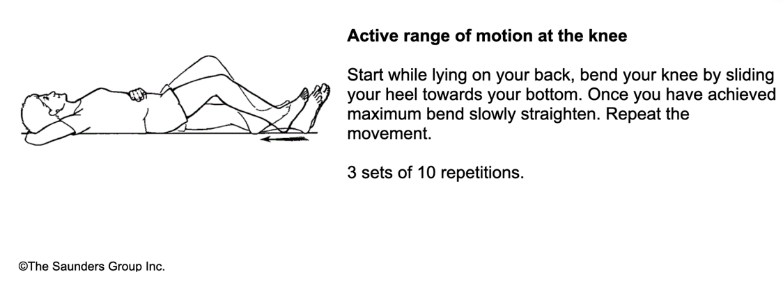
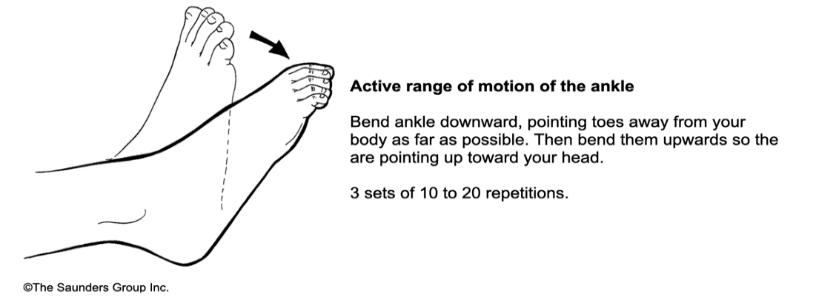
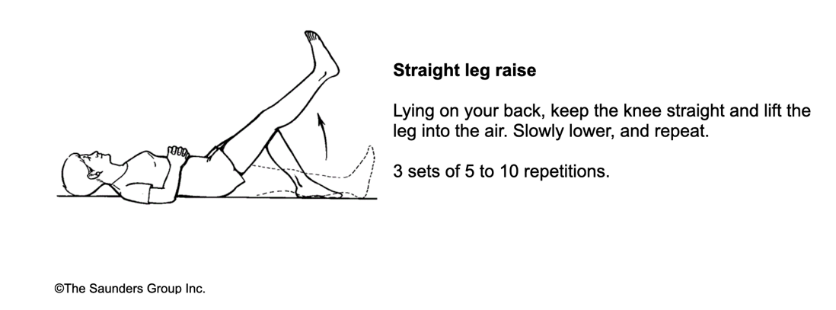
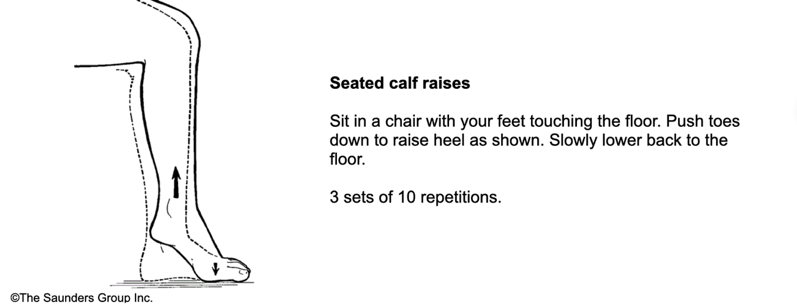

MyChart
We would encourage you to sign up for MyChart. This is the electronic patient portal at Cambridge University Hospitals that enables patients to securely access parts of their health record held within the hospital’s electronic patient record system (Epic). It is available via your home computer or mobile device
More information is available on our website: MyChart
Contacts/further information
Orthopaedic Physio Team: 01223 216633
Clinic 1: 01223 806000
We are smoke-free
Smoking is not allowed anywhere on the hospital campus. For advice and support in quitting, contact your GP or the free NHS stop smoking helpline on 0800 169 0 169.
Other formats
Help accessing this information in other formats is available. To find out more about the services we provide, please visit our patient information help page (see link below) or telephone 01223 256998. www.cuh.nhs.uk/contact-us/accessible-information/
Contact us
Cambridge University Hospitals
NHS Foundation Trust
Hills Road, Cambridge
CB2 0QQ
Telephone +44 (0)1223 245151
https://www.cuh.nhs.uk/contact-us/contact-enquiries/
